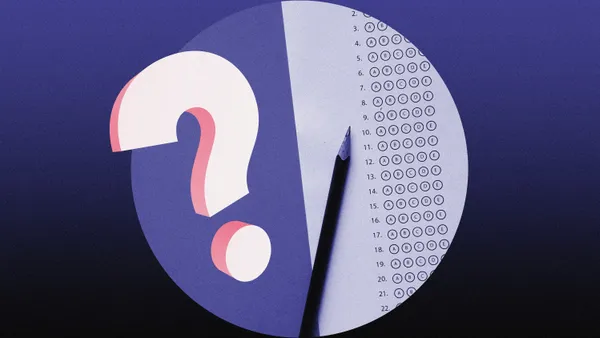Dive Brief:
- State and district leaders have made significant progress in closing student access gaps to devices, internet and other technology, but these gains haven't led to "meaningful improvements in teaching and learning,” according to a report released Wednesday by the State Educational Technology Directors Association and other education organizations.
- The report said a "digital use divide" is persisting, at least partially due to a lack of sustained teacher professional development in helping students engage in deeper learning experiences through technology — especially as artificial intelligence becomes more prevalent.
- Federal Title II, Part A funds and other federal and state grants could be a critical lever for K-12 leaders in closing this divide, the report said. The digital use divide — or the gap in how different students use technology — varies from the more commonly known “digital access divide,” which refers to inequitable access to technology among students.
Dive Insight:
Title II, Part A of the Every Student Succeeds Act, along with other funding streams, can be used to support educators in the long term with professional learning, leadership development and evaluation systems that prioritize integrating technology into effective instruction, the report said.
While Title II, Part A is one of the most flexible funding sources for states and school districts to use for strengthening teacher effectiveness, the report said the funding is often underutilized for professional development on incorporating technology into instruction. This gap in professional development is known as the “digital design divide.”
Citing U.S. Department of Education data, the report found that over 60% of Title II, Part A funds were spent on professional development during the 2022-23 school year. But a majority of those federal dollars went toward short-term workshops instead of sustainable strategies, the report said.
Additionally, nine states used Title II, Part A funds for technology training, and less than 40% of school districts used it for technology-related professional development.
SETDA’s report was developed in partnership with education nonprofits ISTE+ASCD and FullScale as well as Learning Forward, a professional development education association.
“Connectivity is the foundation, not the finish line. Closing the digital design divide is how we make equitable, technology-enabled learning a reality for all students,” said Julia Fallon, executive director of SETDA, in a Wednesday statement.
The report’s release comes almost two years after the Biden administration's Education Department released its 2024 Educational Technology Plan. That blueprint identified the digital use divide as one of three ed tech barriers to equity needing to be addressed.
The department defined the digital use divide as the inequitable implementation in how students use technology in the classroom. For example, some students may use technology actively in their learning, while others may use ed tech to just passively complete assignments.
Fast-forward to this year, and the urgency to address the digital use divide has only grown with the rapid development of and federal push for AI in schools, the report said.
Still, there’s a lack of national leadership on this issue, the report added — especially after the Trump administration's decimation of the Education Department’s Office of Educational Technology in March. Because of this, the education groups said state and local education leaders need to step up and define what high-quality technology instruction should look like.
The report also highlights ways in which K-12 leaders can “move beyond one-off tool training” and build sustainable technology instruction support for educators, said Joseph South, chief innovation officer at ISTE+ASCD, in a Wednesday statement.
“Educators deserve professional learning that begins with real classroom challenges and demonstrates how technology can meaningfully address them,” South said.
To close the digital use divide, the report suggests state and local leaders consider these recommendations for integrating high-quality teacher trainings on technology:
- Match every investment in digital tools with sustained professional learning that aligns with instructional goals.
- Ensure instructional technology leaders have a voice in state and district decisions on funding priorities, AI guidance and strategies for making instructional improvements.
- Create a unified definition of high-quality, technology-integrated instruction, and connect policy guidance to that shared vision while also braiding funding streams.
- Highlight and share examples of early progress in sustained professional development to encourage systemwide change.
- Evaluate professional learning in states and districts for effectiveness and sustainability and to ensure training continuously improves.
- Protect and use existing, flexible federal funds like Title II, Part A, and develop other funding streams to scale out successful, equity-centered initiatives.











